TL;DR: This sofa buying guide walks you through every critical decision point when purchasing a couch—from frame construction and cushion quality to fabric durability and proper sizing. A quality sofa should last 7-15 years with proper selection, focusing on hardwood frames, eight-way hand-tied springs, high-density foam, and durable upholstery that matches your lifestyle and space requirements.
How to Buy the Perfect Sofa
A sofa buying guide is essential when you’re ready to invest in one of the most important furniture pieces in your home. You sit on it daily, entertain guests around it, and build countless memories on it—yet choosing the wrong sofa can lead to years of discomfort, premature wear, and buyer’s remorse.
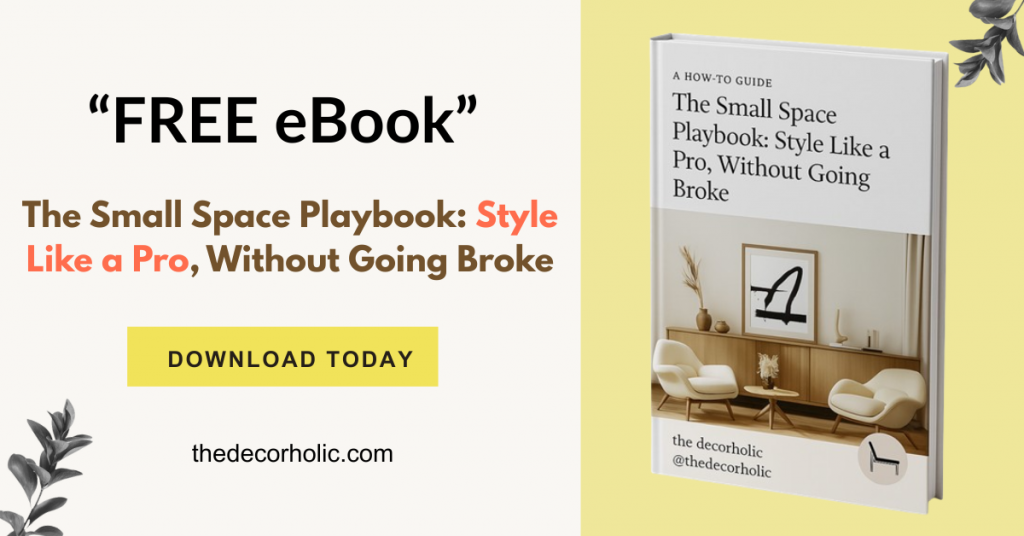
The average American household spends approximately $209 on sofas each year, and with quality sofas lasting between 7 to 15 years, this purchase demands careful consideration. Whether you’re furnishing your first apartment or upgrading your living room, understanding what makes a sofa truly exceptional transforms this overwhelming decision into an exciting opportunity to enhance your space.
This comprehensive sofa buying guide walks you through every critical factor—from frame construction and fabric durability to sizing strategies and style selection—so you can confidently choose a sofa that delivers comfort, beauty, and lasting value.
I. What Are the Most Important Factors When Buying a Sofa?

The most critical factors when buying a sofa include proper measurements for your space, frame construction quality, upholstery durability suited to your lifestyle, cushion comfort and fill type, and overall build quality that ensures longevity. These foundational elements determine whether your sofa will serve you well for over a decade or become a costly mistake within a few years. Prioritizing these factors over aesthetics alone guarantees you’ll select a piece that balances form and function perfectly.
When evaluating sofas, start by assessing how you’ll actually use the piece. Do you have children or pets? Will this be your primary seating for daily TV watching, or is it more decorative? Your lifestyle directly impacts which materials and construction methods will work best. A family room sofa needs performance fabrics and reinforced frames, while a formal living room piece can prioritize elegance and delicate materials.
Pro Tip: Create a checklist of your non-negotiables before you start shopping. Include factors like “must fit through 32-inch doorway,” “needs to accommodate two adults lying down,” or “must be easy to clean.” This prevents impulse purchases that don’t meet your actual needs.
Also: How to Choose the Right Furniture for Your Living Room: Step by Step Guide
II. What Sofa Frame Material Offers the Best Durability?
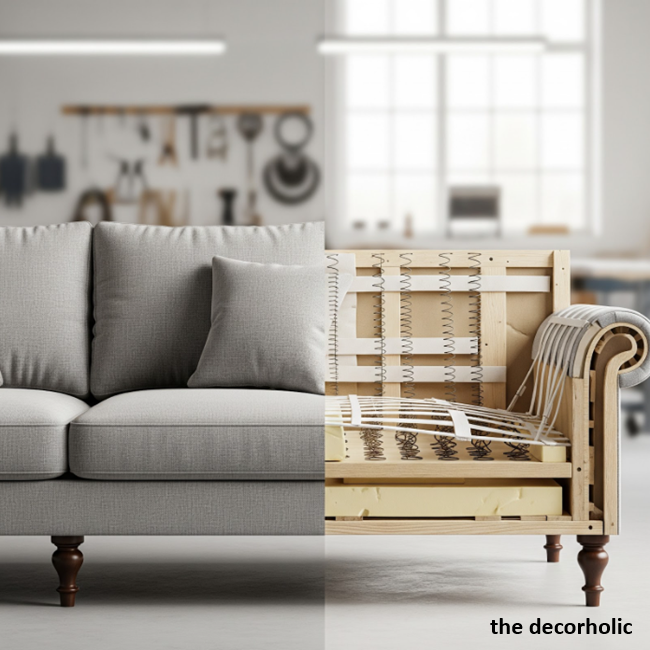
Hardwood frames made from kiln-dried hardwoods like oak, maple, or beech provide superior durability and can last 15-20+ years, while engineered wood or softwood frames typically last 5-7 years. The frame is your sofa’s skeleton—it bears all the weight and stress of daily use.
Premium manufacturers use mortise-and-tenon joinery or doweled joints reinforced with corner blocks, which creates exceptional stability compared to stapled or glued connections that weaken over time.
High-quality frames feature:
- Kiln-dried hardwood: Prevents warping and ensures structural integrity
- Corner blocks: Reinforced corners that prevent wobbling and spreading
- Eight-way hand-tied springs: Premium suspension system offering superior support
- Minimal metal parts: Screws should supplement wood joinery, not replace it
Engineered wood products like plywood and MDF appear in many mid-range sofas and can perform adequately for lighter use. However, they lack the longevity of solid hardwood and are more susceptible to moisture damage and loosening over time. Avoid sofas with frames made entirely from particleboard or softwoods like pine, which sag and break under regular stress.
Pro Tip: If possible, lift one end of the sofa slightly—a quality hardwood frame will feel substantial and solid, while poor frames feel hollow or shift noticeably. Don’t be shy about asking retailers to reveal frame construction details or provide cross-section diagrams.
Trending Post: 5 Secrets to a Designer Look Living Room For Less
III. Spring Systems and Suspension Support
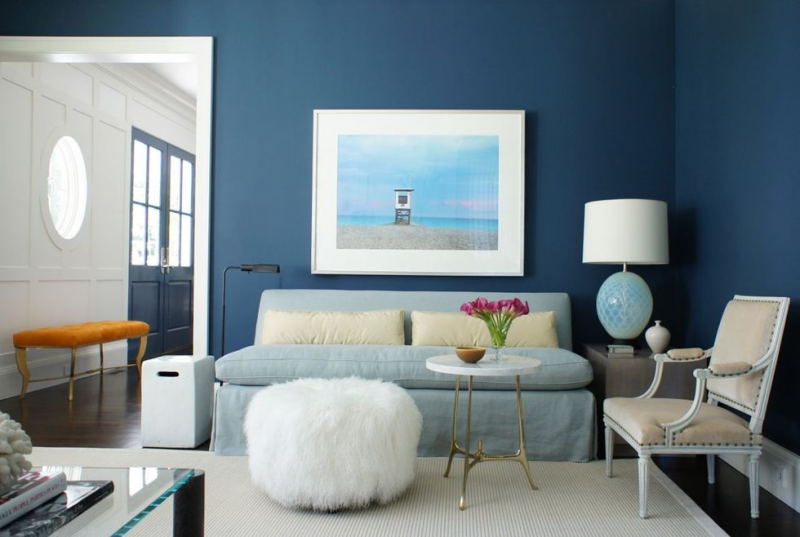
The suspension system determines how your sofa feels when you sit and how well it maintains support over thousands of uses—eight-way hand-tied springs offer superior longevity and comfort, while lower-cost alternatives like sinuous springs can still perform well when properly installed. Spring quality directly correlates with how long your cushions maintain their shape and how comfortable the sofa remains after years of use.
Spring System Hierarchy
Eight-way hand-tied coil springs represent the premium standard for sofa suspension. Craftspeople individually tie each hourglass-shaped coil to its neighbors in eight directions using twine, creating a flexible yet supportive web that distributes weight evenly. This labor-intensive process costs more but delivers unmatched durability and comfort that lasts decades. These springs compress and rebound smoothly, preventing the “bottoming out” sensation found in cheaper sofas.
Sinuous (S-shaped) springs run from front to back across the frame in parallel rows, connected by metal clips. While less expensive than hand-tied coils, quality sinuous spring systems use heavy-gauge wire and proper spacing (4-6 inches apart) to provide excellent support. Many reputable mid-range furniture manufacturers use sinuous springs successfully—the key is wire thickness and proper installation tension.
Webbing suspension uses interlaced synthetic or jute straps stretched across the frame. When combined with springs or high-quality foam in high-stress areas (seat positions), webbing can work adequately. However, webbing-only suspension tends to sag faster than spring systems, particularly in sofas that see heavy daily use.
Pocket coil springs borrow technology from mattresses, encasing individual coils in fabric pockets. This system offers good support and minimal motion transfer, making it ideal for sectionals where multiple people sit simultaneously. However, pocket coils typically cost more than sinuous springs while performing similarly.
How to Evaluate Suspension
When testing a display sofa, sit firmly in different positions and feel whether the springs provide even support without pressure points. Stand up and observe how quickly the cushion rebounds. Quality springs should return to their original position within seconds, not remain compressed. Press your hand down firmly between cushions to feel the suspension directly—you should sense resistance and structure, not just cushion filling.
Pro Tip: Ask the retailer specifically about the spring system before purchasing. If sales staff can’t clearly explain what type of springs the sofa uses, consider it a red flag about overall quality and transparency.
Don’t Miss: Best Sofa for Small Spaces: Transform Tiny Rooms Into Stylish Sanctuaries
IV. Cushion Construction: Comfort That Lasts
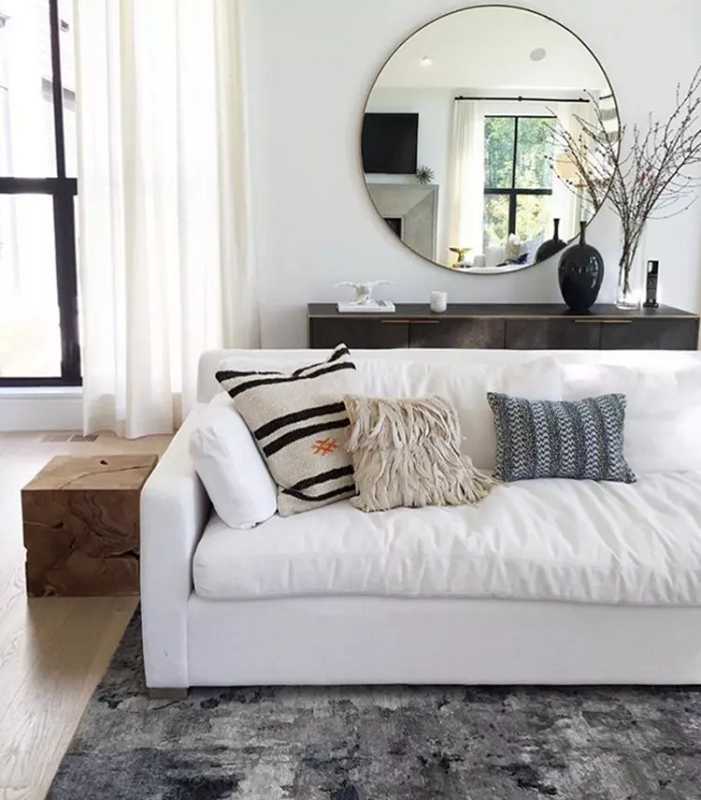
Seat and back cushions determine daily comfort and how well your sofa maintains its appearance—high-density foam cores wrapped in down or polyester batting deliver the ideal balance of support, softness, and shape retention over 10+ years. Cushion quality explains why some sofas remain plump and inviting while others develop permanent body impressions and require constant fluffing.
Quality seat cushions require density, not just thickness. High-density foam (1.8 pounds per cubic foot or higher) provides firm support that resists compression over thousands of sits. Lower-density foam feels initially comfortable but quickly develops permanent depressions where you sit most frequently. The best seat cushions use a firm, high-density foam core wrapped with a softer layer of down, feather, or polyester batting. This creates a firm-yet-soft sitting experience that rebounds properly.
Cushion Fill Options Explained
- 100% down or feather: Luxuriously soft but requires daily fluffing and reshaping; better suited for back cushions than seats
- High-density foam core with down wrap: The sweet spot—supportive core with soft surface feel; maintains shape with minimal maintenance
- High-density foam with polyester batting: More affordable than down; performs similarly with good shape retention and less fluffing
- Memory foam: Conforms to body shape but can sleep hot and may feel too soft for some users; works well as a comfort layer over high-density foam
- Low-density foam only: Budget option that deteriorates quickly; develops permanent impressions within 1-2 years
Back cushions can use softer materials since they support less weight. Many quality sofas feature firmer seat cushions and softer back cushions for optimal comfort. Consider whether you prefer attached cushions (permanently secured to frame) or loose cushions (removable). Loose cushions allow rotation to distribute wear evenly and make cleaning easier, but they require occasional repositioning to stay neat.
Cushion cores should have quality ticking (the fabric wrapper) that prevents fill materials from shifting or bunching. Look for cushions with zippers that allow access to fill materials—this indicates the manufacturer expects the cushion to last long enough that owners might want to refresh or adjust fill materials over time.
Pro Tip: Test cushion recovery by pressing your full weight into the seat corner for 15 seconds, then observe how quickly it rebounds. Quality foam should recover 90% of its shape within 30 seconds. If a permanent impression remains or recovery takes several minutes, the foam density is insufficient for long-term use.
Also: Modular Sofas for Small Spaces: Brilliant Solutions for Compact Living
V. Selecting the Right Upholstery Fabric for Your Lifestyle
Upholstery choice must balance aesthetics with practical durability—for high-traffic homes with kids and pets, performance fabrics like solution-dyed acrylic or quality microfiber provide stain resistance and longevity, while leather offers unmatched durability and improves with age when properly maintained. Leather upholstery is the most durable option and can last four times longer than even the best fabrics, though it requires occasional conditioning.
Fabric Performance Factors

Rub count (or double rub count) measures fabric durability through standardized abrasion testing. Fabric intended for heavy residential use should have a minimum rub count of 15,000. Commercial-grade fabrics rate 30,000 or higher. This number tells you how many times a machine can rub the fabric before showing wear—higher numbers indicate greater durability.
Fiber content dramatically impacts performance:
- Natural cotton and linen: Breathable and comfortable but prone to wrinkling, fading, and staining without treatment; performs better when blended with synthetics
- Solution-dyed acrylic: Color is embedded into fiber before weaving, making it fade-resistant and cleanable; excellent for outdoor and high-traffic indoor use
- Performance polyester/microfiber: Engineered to resist stains and wear while mimicking natural fabric hand; often treated with stain-resistant finishes
- Wool blends: Naturally stain-resistant and durable but can be scratchy; blends with synthetic fibers improve softness
- Olefin/polypropylene: Budget-friendly synthetic that resists moisture and stains but can pill and flatten over time
Leather Considerations
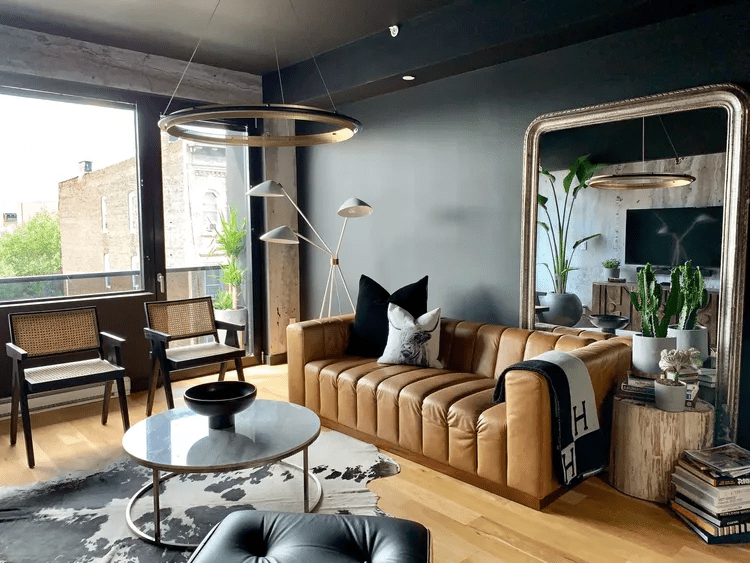
Full-grain leather represents the highest quality, using the entire hide thickness with natural surface intact. It develops a beautiful patina over decades and resists tearing and punctures better than any fabric. Top-grain leather has the surface lightly sanded for uniformity but still offers excellent durability. Avoid “bonded leather” or “split leather,” which are leather scraps bonded with polyurethane—these materials peel and crack within 3-5 years and shouldn’t be marketed as genuine leather.
Leather requires minimal maintenance but needs conditioning 1-2 times annually to prevent drying and cracking. It feels cool in summer, warms quickly in winter, and wipes clean easily. However, leather shows scratches more readily than fabric, which matters in homes with pets. Aniline-dyed leather preserves the most natural appearance but stains more easily than protected leather finishes.
H3: Leather vs. Performance Fabrics
| Material | Pros | Cons | Ideal For |
| Top-Grain Leather | Highly durable, easy to wipe clean, ages well, hypoallergenic. | High initial cost, can scratch, feels cold in winter/hot in summer. | Pets, high-end look, easy maintenance. |
| Performance Fabric | Excellent stain resistance, high double rub count, budget-friendly. | Synthetic feel, can fade in direct sunlight. | Kids, busy family rooms, high traffic. |
Color Strategy
Neutral colors provide maximum decorating flexibility as your style evolves. For warm-toned interiors, choose beige, camel, mushroom, or cream. Cool palettes work best with gray, charcoal, navy, or white. Pattern considerations include:
- Solid colors: Show wear and fading more obviously but offer decorating versatility
- Herringbone, tweed, or flecked patterns: Hide fading, scuff marks, and light staining through visual texture
- Bold patterns or colors: Create statement pieces but limit future decorating flexibility and show trend age
If you’re drawn to trendy colors or bold patterns, consider using those elements in throw pillows and blankets that you can replace inexpensively when trends shift. Your sofa should remain stylistically relevant for 10-15 years.
Pro Tip: Request fabric samples to test at home before purchasing. Place samples where your sofa will sit and observe them in morning, afternoon, and evening light. Rub them vigorously with your hands to check for pilling, and if you have pets, test whether their claws catch on the weave. This simple test reveals whether the fabric suits your real-world conditions.
Don’t Miss: 10 Best Modular Sectional Sofas on Amazon
VI. Sizing and Space Planning: Ensuring the Perfect Fit
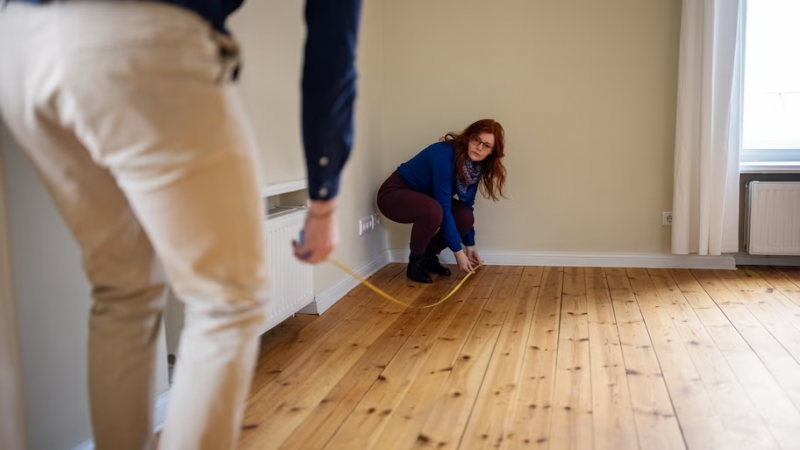
Proper sofa sizing requires measuring not just the destination space but also all pathways, doorways, and turns needed to deliver the sofa—a perfectly sized sofa becomes useless if it can’t physically reach your living room. Rounded furniture including curved sofas creates better flow in open-plan areas, an important consideration for modern homes with fewer walls.
Measuring Your Space
Start by measuring the wall or area where you’ll place the sofa. For a sofa against a wall, leave at least 2-3 inches of breathing room on each side to prevent the upholstery from rubbing and to allow for cleaning. Record three critical measurements:
- Width/length: The total horizontal space available
- Depth: How far the sofa can project into the room
- Height: Especially important if the sofa sits under windows or wall-mounted elements
Account for traffic flow around the sofa. You need a minimum of 30 inches for comfortable walking paths, though 36 inches feels more spacious. In conversation areas, place seating pieces 7-10 feet apart for easy dialogue without shouting. If your sofa faces a TV, calculate proper viewing distance (typically 1.5-2.5 times the TV’s diagonal measurement).
Visualizing Before Purchasing
Use painter’s tape or string to outline the sofa’s exact dimensions on your floor. This tangible visualization reveals whether the size truly fits your space and how it impacts room flow. Measure the sofa’s arm height as well—you should be able to comfortably rest your arm on it without hunching your shoulders or extending awkwardly.
The Delivery Challenge
This critical step is often overlooked until delivery day creates an expensive nightmare. Measure:
- All doorway widths (both exterior and interior)
- Hallway widths if applicable
- Stairwell dimensions including width, height, and landing space for pivoting
- Elevator dimensions for apartment buildings
- Ceiling heights in all pathways
Sofas need to fit through openings both horizontally and vertically, often at angles. As a general rule, a sofa can navigate doorways if the diagonal measurement (from top back corner to bottom front corner) is shorter than the door opening. Many furniture retailers provide online tools to calculate whether sofas fit through specific openings.
Consider modular or sectional sofas if you have tight spaces or complex delivery paths. These pieces arrive in separate sections that you assemble in the room, eliminating delivery concerns while providing configuration flexibility. Some manufacturers offer sofas with detachable legs, reducing the overall height for easier maneuvering.
Pro Tip: Take photos of your doorways, stairs, and hallways with a tape measure visible in the frame, then share these with the furniture retailer before purchasing. Many delivery services offer “white glove” delivery where professionals evaluate access before the delivery date, preventing expensive returns or damage from forcing furniture through inadequate spaces.
Also: How to Style a Curved Sofa for an Inviting Living Room
VII. What Sofa Styles Match Different Interior Design Aesthetics
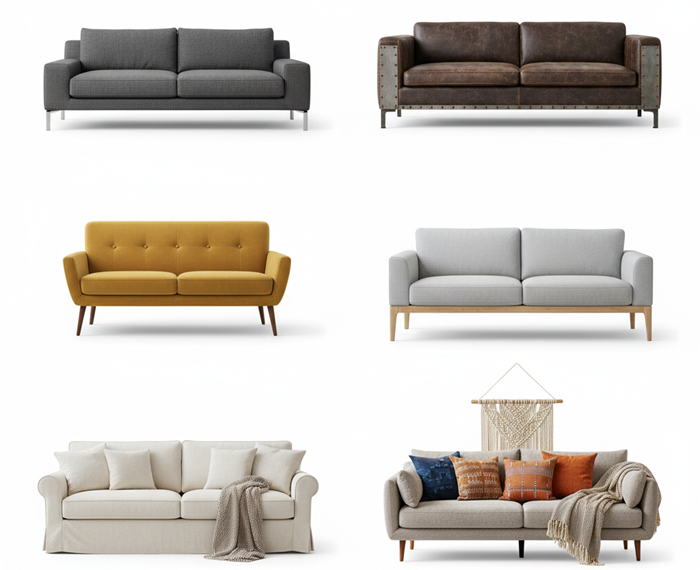
Your sofa must harmonize with your room’s overall design language—modern spaces demand clean-lined, low-profile silhouettes while traditional interiors call for classic details like rolled arms, tufting, and turned legs. Transitional style, one of today’s most popular interior design trends, blends timeless elements from both traditional and modern eras, creating balanced, harmonious looks. Choosing a sofa that complements your aesthetic creates visual cohesion and prevents the expensive mistake of purchasing furniture that clashes with your design vision.
“This post may contain affiliate links. I earn a commission on qualifying purchases at no additional cost to you.“
Modern and Contemporary Aesthetics
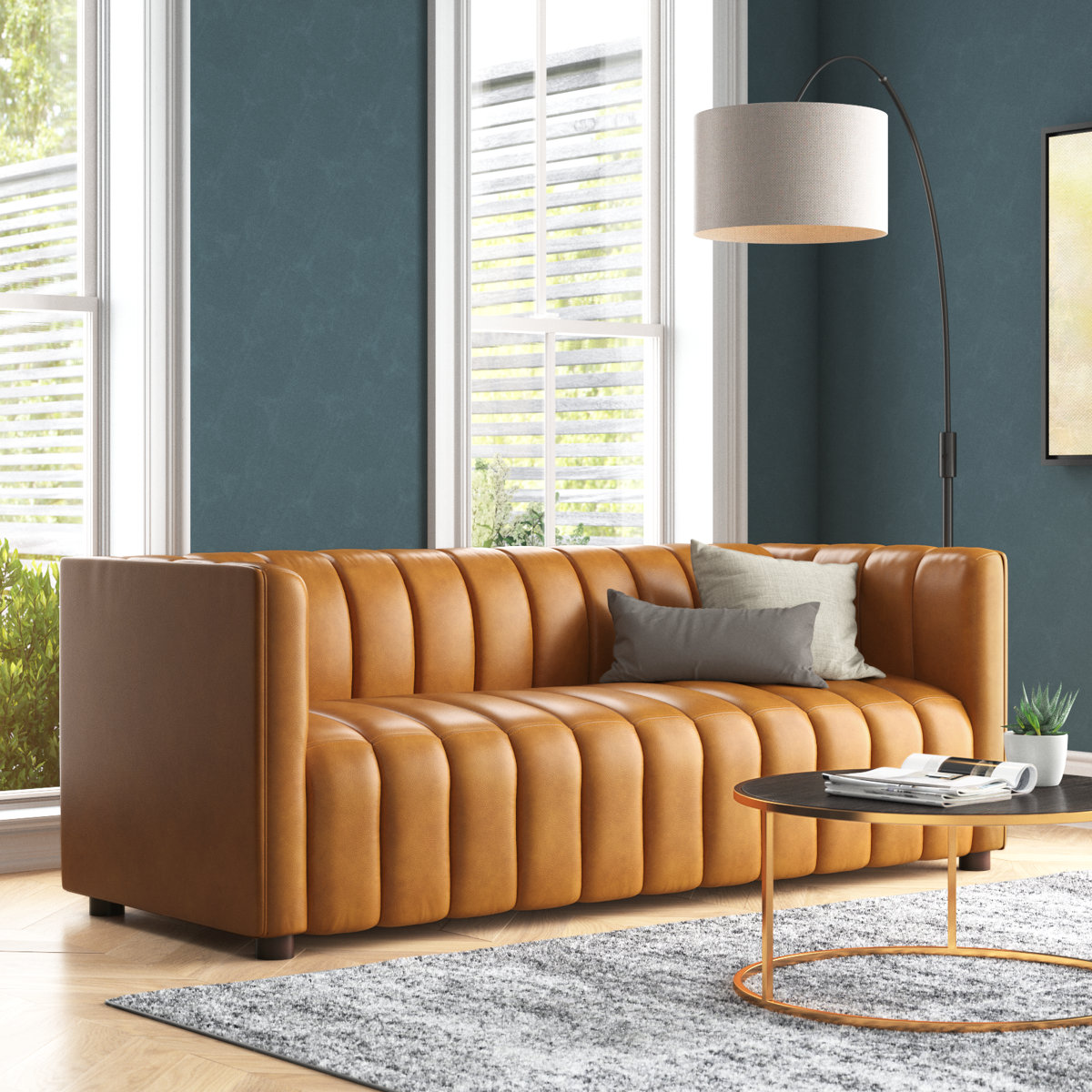
Anorea 83” Genuine Leather Channel Tufted Sofa
Elevate your living space with this ultramodern sofa that’s wrapped in genuine leather that’s water- and stain-resistant and only improves with age.
Check Price on Wayfair →Modern and contemporary sofas prioritize minimalism, clean geometry, and functional simplicity. Look for low-profile designs with straight lines, track arms (square, unadorned arms), and exposed legs in metal or wood finishes. Upholstery typically features solid colors—especially neutrals like gray, white, black, or navy—though jewel tones work when you want a statement piece. Modern sofas often have slim proportions, minimal cushioning details, and architectural presence that makes them sculptural focal points.
Key characteristics include:
- Silhouette: Low backs, straight lines, geometric forms
- Arms: Track arms, no arms, or thin tapered arms
- Legs: Exposed metal hairpin legs, angled wood legs, or platform bases
- Upholstery: Leather, solid-color performance fabrics, or subtle textures
- Details: Minimal ornamentation; beauty through proportion and form
Contemporary differs slightly from modern—it’s more fluid and incorporates current trends while modern refers specifically to mid-20th century design principles. Contemporary sofas might include curved elements, mixed materials (leather with metal accents), or bolder patterns than strictly modern pieces.
Mid-Century Modern Charm
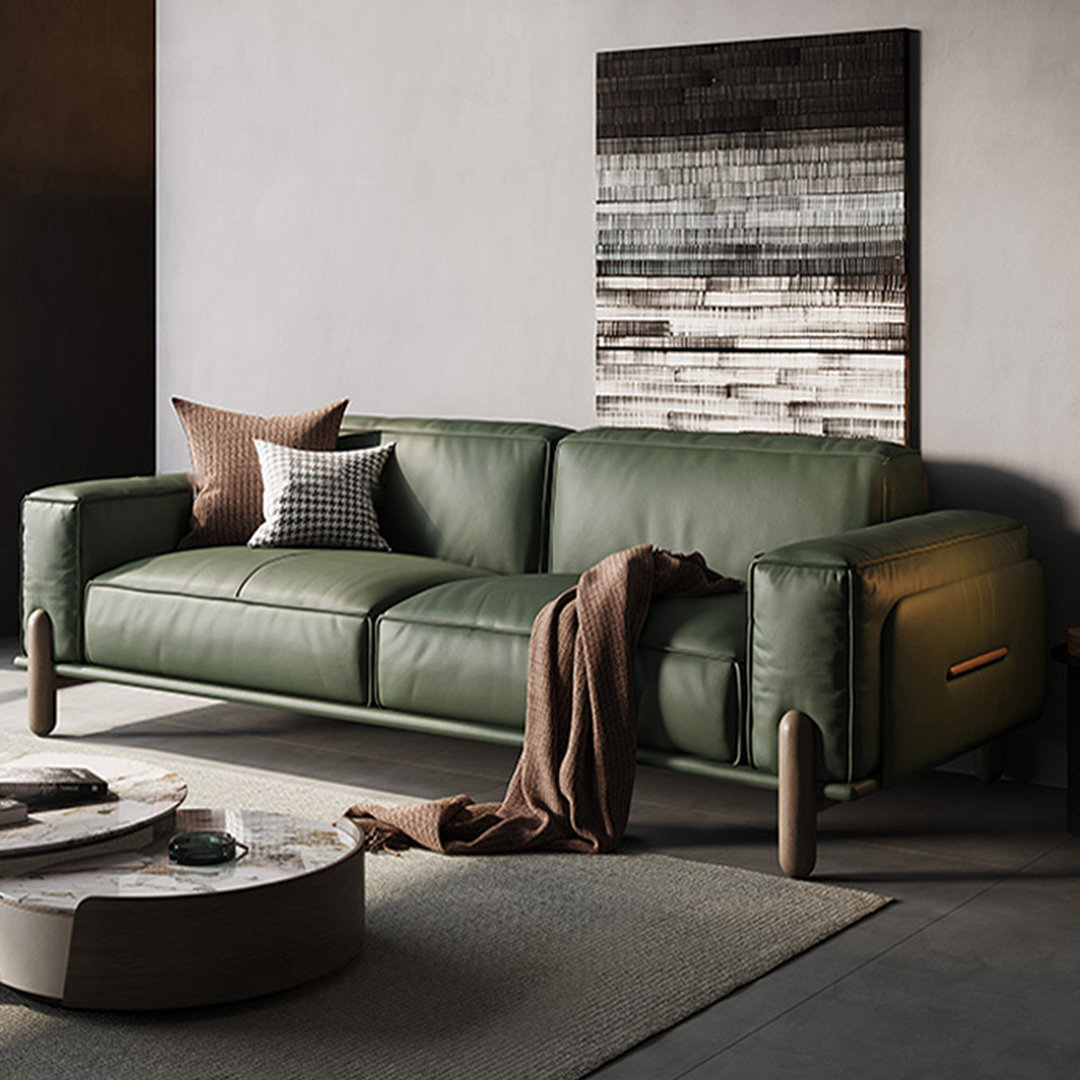
Genuine Leather Loveseat Green Sofa Couch
This leather sofa is extremely soft and comfortable, with a luxurious velvety touch that can make you immerse in a warm embrace
Check Price on WayfairMid-century modern designs draw inspiration from classic 1950s and 1960s aesthetics, incorporating clean lines, bold colors, and sleek shapes. These sofas feature characteristic tapered wooden legs, button tufting on backs and arms, and a slightly more playful aesthetic than stark contemporary designs. The silhouette sits lower to the ground with angled legs that splay outward, creating an open, airy feel underneath.
Iconic mid-century elements:
- Signature legs: Tapered, angled wood legs (often walnut or teak-toned)
- Arms: Thin, rounded, or gently sloped arms that don’t overpower
- Back style: Often tufted or channeled with visible button details
- Color palette: Warm wood tones paired with mustard, orange, teal, or olive upholstery
- Overall vibe: Organic shapes, functional beauty, retro sophistication
Mid-century modern sofas work beautifully in open-concept homes, urban apartments, and spaces with other vintage-inspired pieces. They pair exceptionally well with organic materials, abstract art, and minimalist décor that doesn’t compete for attention.
Traditional and Classic Elegance
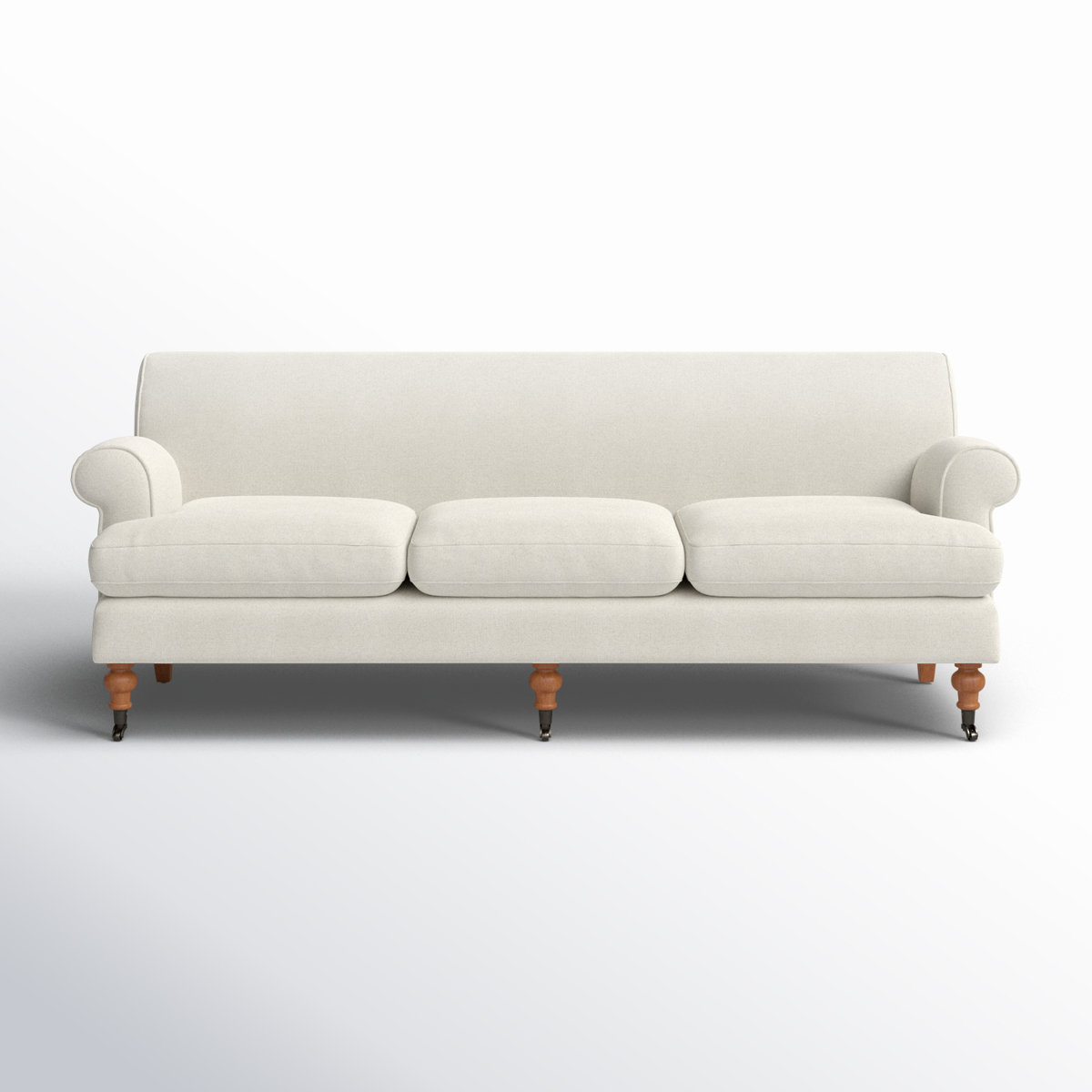
Harbor 88″ Upholstered Sofa
The streamlined silhouette with rolled arms gives this sofa its modern look, while the three elegantly turned legs round it out with chic flair. It is available in multiple color options, so you can match it to your look.
Check Price on WayfairTraditional sofas embody timeless elegance with ornate details, plush cushioning, and refined proportions. Traditional design exudes formality and grandeur with ornate details, making these sofas perfect for formal living rooms, libraries, and homes with architectural details like crown molding or wainscoting. Look for higher backs, rolled or English arms with decorative wood trim, skirts that hide legs, and rich fabrics like velvet, damask, or jacquard.
Traditional sofa characteristics:
- Arms: Rolled, English, or Lawson styles with curves and scrollwork
- Back style: High backs with cushion or tufted treatments
- Legs: Turned or carved wooden legs; often hidden by skirts
- Upholstery: Rich textures, patterns (florals, stripes, damask), jewel tones
- Details: Nailhead trim, decorative wood accents, deep button tufting
Chesterfield sofas epitomize traditional style with deep button tufting across the entire back, arms, and sometimes seats, paired with rolled arms at the same height as the back. These statement pieces work in studies, formal parlors, or as anchor pieces in eclectic spaces that mix old and new.
Transitional: The Best of Both Worlds

Shelby 82” Upholstered Sofa
This beautiful sofa features flared arms, a tailored skirt, and a streamlined silhouette that elevates living spaces with sophisticated comfort
Check Price on WayfairTransitional furniture marks a harmonious blend of traditional and contemporary styles, embodying the elegance of classic designs with the clean simplicity of modern aesthetics. This versatile style has surged in popularity because it bridges generations and allows flexibility in accessories and décor changes. Transitional furniture silhouettes offer straightforward sophistication where pieces with right angles and crisp lines share space with more rounded profiles.
A transitional sofa might feature:
- Silhouette: Clean lines with subtle curves (not overly ornate or stark)
- Arms: Track arms with gentle padding, or simplified rolled arms
- Legs: Simple wooden legs or low-profile metal, typically exposed
- Upholstery: Neutral tones or subtle patterns with classic materials like linen, cotton, or leather
- Overall aesthetic: Refined without being fussy, current without being trendy
Transitional sofas excel in homes where occupants can’t agree on purely modern versus traditional, in spaces that need to accommodate inherited antiques and new purchases, or for homeowners who appreciate timeless style that won’t feel dated in a decade.
Bohemian and Eclectic Style
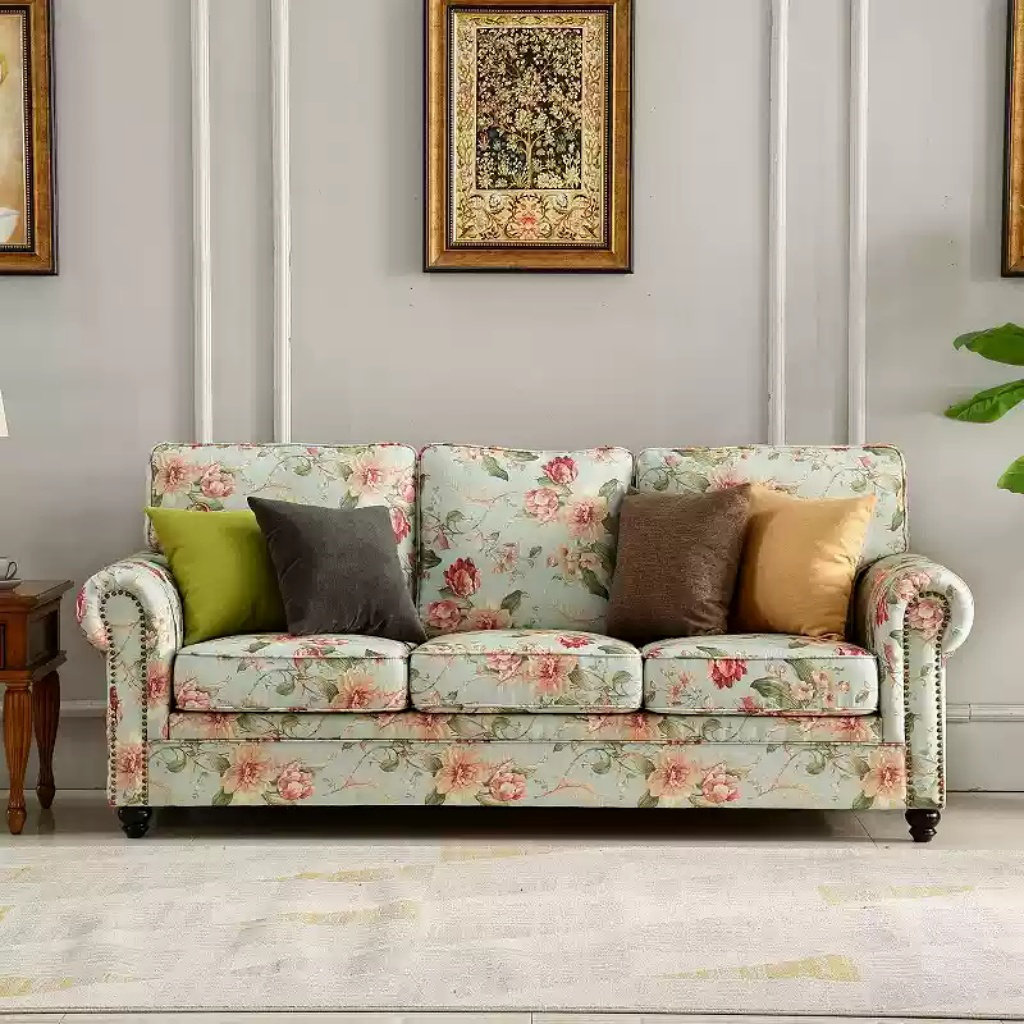
American Country Living Room Sofa
Full of design and simple sense, taking into account the dual value of beauty and practicality.
Check Price on WayfairBohemian interior design embraces individuality, artistic flair, and a relaxed, free-spirited lifestyle, defined by a vibrant blend of patterns, textures, and colors. Boho sofas lean into comfort and personality over formality. Look for low-slung styles with plush cushions, layered textiles, and vintage-inspired silhouettes. The beauty lies in imperfection and collected-over-time aesthetics.
Bohemian sofa features:
- Silhouette: Casual, often lower and deeper for lounging
- Upholstery: Rich textures (velvet, chenille, woven fabrics), bold patterns, jewel tones
- Layering: Multiple throw pillows in mixed patterns, draped blankets, textured throws
- Style sources: Vintage finds, global influences (Moroccan, Turkish), repurposed pieces
- Overall vibe: Comfortable, personal, artistically curated
Bohemian style thrives on mixing rather than matching, so your sofa doesn’t need to perfectly coordinate with other pieces. In fact, an eclectic mix of furniture styles, eras, and origins creates authentic boho charm. Consider vintage leather sofas with worn patina, velvet loveseats in unexpected colors, or low-profile modern pieces dressed in layers of global textiles.
Farmhouse and Cottage Comfort
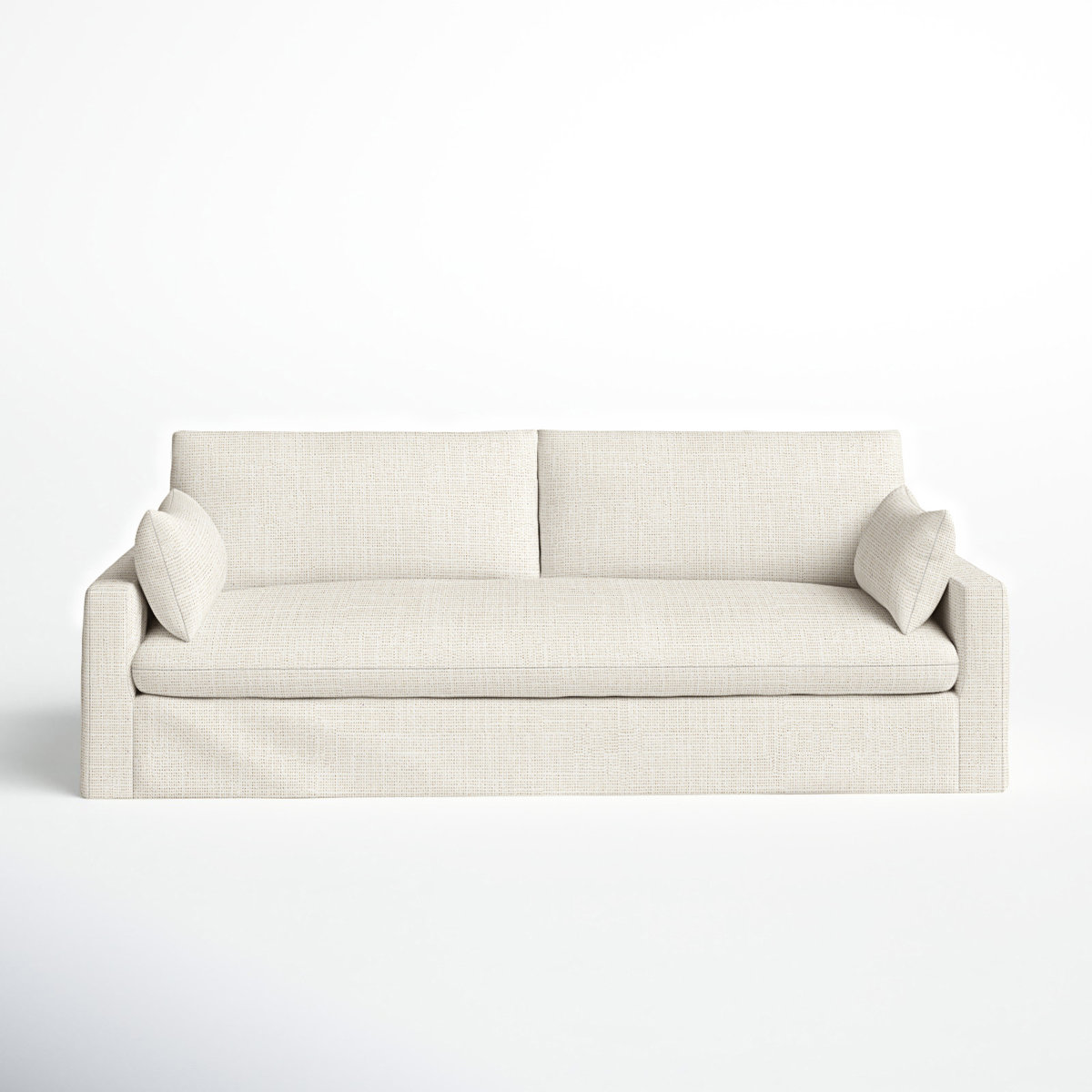
Luna 90” Slipcovered Sofa
Sink into comfort with this inviting sofa, a classic piece that seamlessly blends into your living space. With its low-profile design and clean lines, it complements a variety of aesthetics, offering a timeless appeal
Check Price on WayfairFarmhouse style emphasizes comfort, functionality, and rustic charm with a nod to rural living and simpler times. Modern farmhouse blends these cozy elements with contemporary clean lines, creating approachable, livable spaces. Farmhouse sofas typically feature:
- Silhouette: Substantial, comfortable proportions (not delicate or minimalist)
- Arms: Rolled or English arms with casual appeal
- Upholstery: Neutral slipcovers (white, cream, beige, gray), durable linens, cotton
- Legs: Simple turned wood legs or hidden by skirts
- Details: Casual comfort over formality, practical durability
Slipcovered sofas define farmhouse style—they’re washable, changeable, and create that relaxed, lived-in aesthetic. White or cream slipcovers pair beautifully with reclaimed wood coffee tables, vintage accessories, and the relaxed layering that makes farmhouse interiors feel welcoming. This style works exceptionally well in family homes where comfort and practicality trump formality.
Industrial and Urban Loft Aesthetics
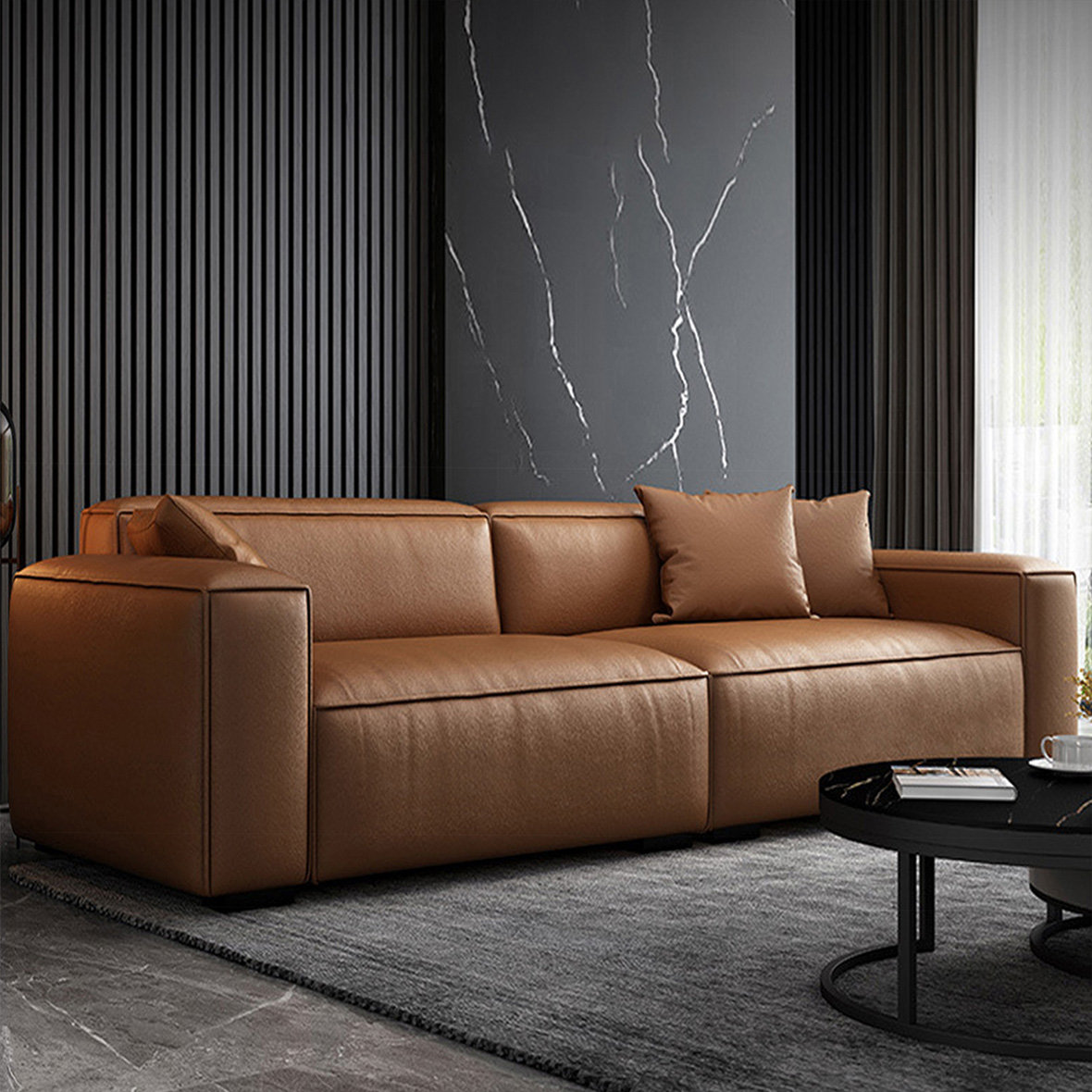
Coffee Genuine Leather Modular Sofa cushion couch
Elevate your living space with our Premium Leather Sofa Collection, offering timeless elegance in two sophisticated hues—rich coffee and deep brown—and five versatile sizes to fit any room
Check Price on WayfairIndustrial design draws inspiration from converted warehouses and urban lofts, combining raw materials, exposed structures, and utilitarian objects with comfortable furnishings. Industrial-style sofas often feature:
- Materials: Leather upholstery (especially distressed or aged leather), exposed metal frames
- Silhouette: Substantial, masculine proportions with visible structural elements
- Color palette: Blacks, browns, grays, deep cognac leather
- Details: Metal legs or frames, rivets, utilitarian hardware, minimal ornamentation
- Overall aesthetic: Raw, honest materials celebrating function
Leather sofas in rich brown or black tones anchor industrial spaces beautifully, especially when paired with metal coffee tables, exposed brick, and concrete elements. The sofa should feel substantial and unpretentious—more workshop than showroom—complementing rather than softening the space’s raw edges.
Scandinavian Simplicity (Scandi Style)
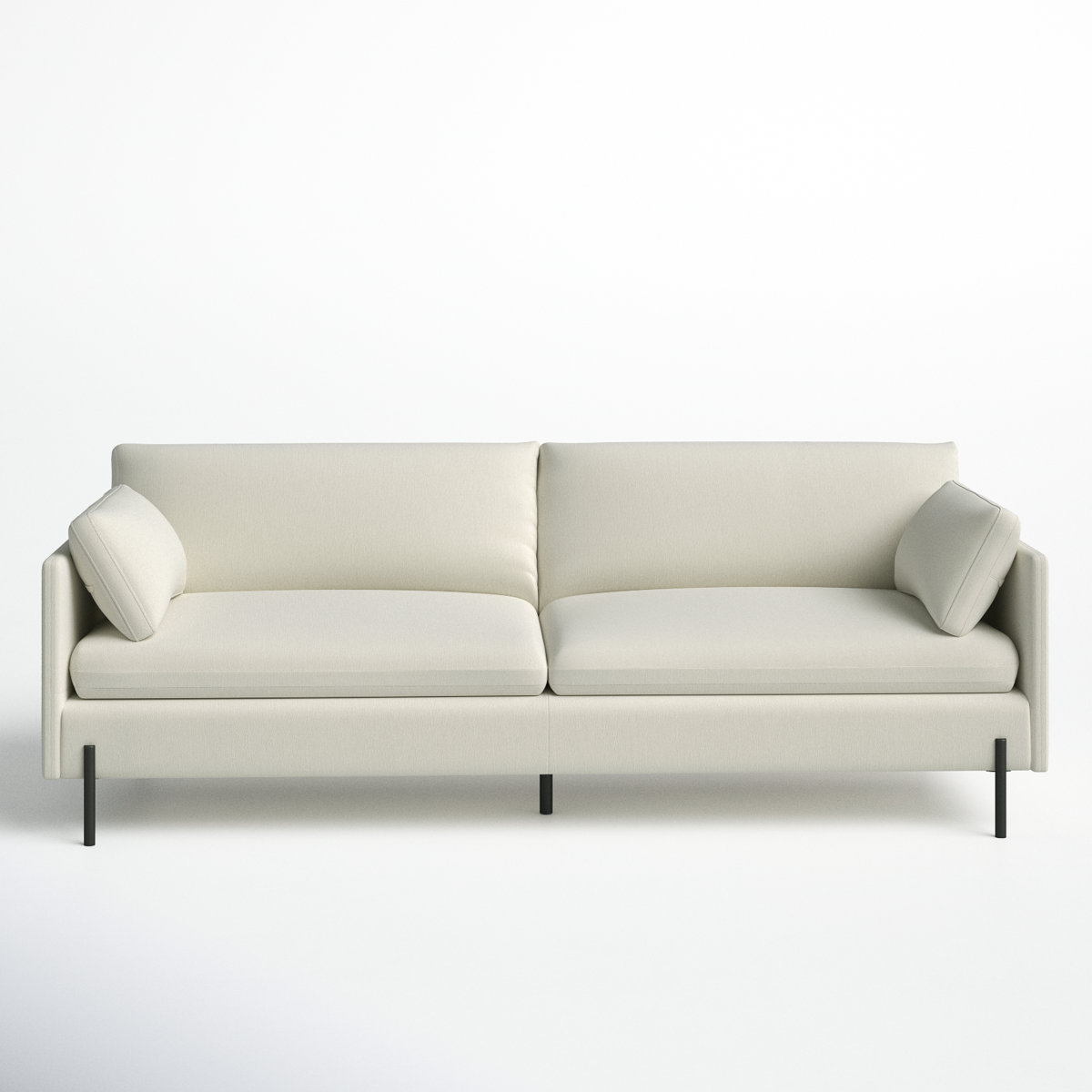
Moab 81” Upholstered Sofa
This sofa is wide and balanced on sleek metal legs for an elevated, modern look in your living room. The frame is crafted from kiln-dried solid and engineered wood, and it’s surrounded by textured fabric in a tone that works with various styles and color palettes
Check Price on WayfairScandinavian design prioritizes functionality, minimalism, and hygge (cozy comfort). Scandi sofas balance clean modern lines with warm, inviting materials that create serene living spaces. Look for:
- Silhouette: Clean lines, low to medium profiles, compact proportions
- Materials: Light woods (oak, ash, birch), natural fabrics, soft leathers
- Color palette: Whites, grays, soft blues, warm neutrals with pops of black
- Legs: Exposed wooden legs, often tapered, in light wood finishes
- Overall feel: Minimalist but warm, functional but beautiful
Scandinavian sofas often feature removable covers in natural fabrics, making them practical for cleaning while maintaining aesthetics. The style embraces negative space and simplicity, so sofas tend toward smaller scales that don’t overwhelm rooms. Pair with natural fiber rugs, simple wood furniture, and abundant natural light for authentic Scandi vibes.
Pro Tip: When uncertain about your design style, choose a neutral transitional sofa with clean lines and simple arms. This chameleon-like style adapts to changing décor, allowing you to shift aesthetics through accessories, art, and accent pieces without replacing your primary furniture investment. A quality neutral transitional sofa works with virtually any design direction you might explore over its 10-15 year lifespan.
VIII. Sofa Types and Configuration Options

Sofa types should complement your room’s aesthetic while serving functional needs—low-profile modern designs suit contemporary spaces with open sightlines, while high-back traditional sofas create intimate seating in formal settings. Understanding style options helps you balance visual appeal with practical use.
Classic Sofa Styles
Standard three-seat sofas (typically 78-90 inches wide) remain the most versatile option for medium to large living rooms. They seat three adults comfortably and pair well with accent chairs or loveseats to create conversation groupings.
Sectional sofas maximize seating in corners and work beautifully in open-plan homes where furniture floats in the space rather than hugging walls. L-shaped sectionals efficiently use corner areas, while U-shaped versions create substantial seating for large families or frequent entertainers. Consider modular sectionals that allow you to reconfigure the layout over time as your needs or living space changes.
Apartment sofas (typically 68-78 inches wide) fit smaller spaces without sacrificing adult-sized seating. They work well in apartments, condos, or as secondary seating in bedrooms or offices.
Loveseats (45-65 inches wide) comfortably seat two adults and fit perfectly in compact spaces, paired with a larger sofa, or as standalone seating in bedrooms or reading nooks.
Sleeper sofas (sofa beds) serve dual purposes in guest rooms or studio apartments. Modern mechanisms have improved dramatically—look for memory foam mattresses (not thin, uncomfortable bars and springs) and smooth pull-out mechanisms that one person can operate easily.
Sofa Back Style Options
- Tight back: Upholstery attached directly to frame; maintains clean lines without cushion rearrangement but offers less plush comfort
- Cushion back: Separate back cushions (often T-shaped) provide softer support and can be flipped/rotated for even wear
- Pillow back: Multiple loose cushions create a casual, inviting look but require frequent fluffing and repositioning
- Tufted back: Button detailing adds visual interest and style; collects crumbs in households with young children
Arm Style Considerations
Arms impact both aesthetics and usable width. Wide, padded arms suit contemporary designs and provide comfortable arm rests but reduce actual seating width by 6-8 inches per side. Track arms (straight, modern arms) maximize seating space efficiency. Rolled or English arms curve gently for classic elegance. Sock arms slope slightly outward for a retro, mid-century modern vibe.
High arms provide better back support when reclining but make the sofa feel larger in small rooms. Low arms create visual openness and suit modern minimalist aesthetics but offer less support. Consider whether you’ll perch on the arms occasionally—some styles support this better than others.
Pro Tip: Curved sofas are trending in 2025, creating softer, more inviting aesthetics that work especially well in open-plan living spaces. If you’re drawn to contemporary design, consider curved or rounded silhouettes that create better conversation flow than traditional straight sofas.
Don’t Miss: Best Clever Ways to Make an Old Sofa Look Like New
IX. Budget Planning: Understanding True Cost vs. Value
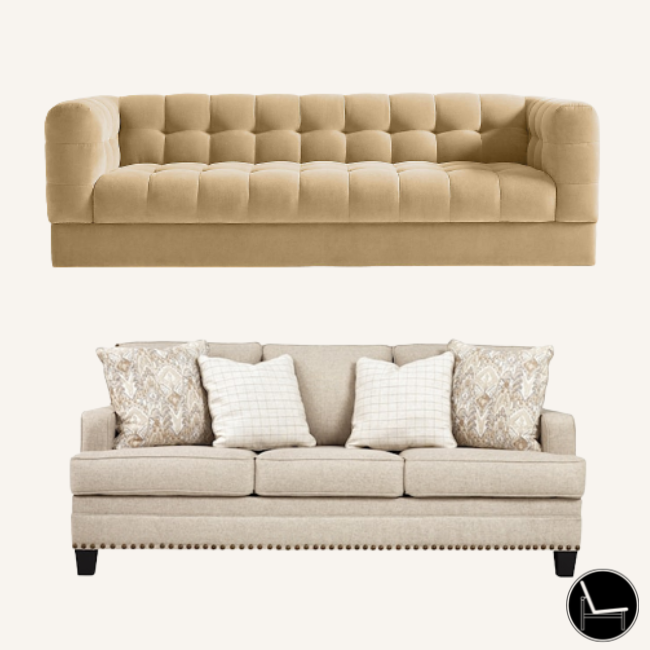
Sofa pricing reflects construction quality, material choices, and expected lifespan—investing $1,500-$3,000 in a quality piece that lasts 12-15 years delivers better value than replacing a $500 sofa every 3-4 years while accepting inferior comfort. Understanding where manufacturers cut costs helps you make informed value decisions.
Price Tier Performance
Budget tier ($500-$1,000): Sofas in this range typically use particleboard frames, low-density foam, sinuous springs with wide spacing, and lower-quality fabrics. Expected lifespan of 3-5 years with careful use. Best suited for temporary living situations, rarely used formal spaces, or those with immediate plans to upgrade. These sofas often feel comfortable initially but deteriorate rapidly with daily use.
Mid-range tier ($1,000-$2,500): This sweet spot offers hardwood frames (often a mix of hardwoods and engineered wood), sinuous spring systems with proper spacing, medium to high-density foam cores, and durable synthetic or cotton-blend fabrics. Expected lifespan of 7-10 years with normal use. These sofas provide good value for growing families and first-time homebuyers establishing quality furnishings without premium prices.
Premium tier ($2,500-$5,000+): Premium sofas feature solid hardwood frames, eight-way hand-tied springs, high-density foam with down wraps, and top-tier upholstery materials. Expected lifespan of 12-20+ years. These investment pieces make sense for homeowners planning to stay long-term, those who use their living room extensively, or buyers who value exceptional comfort and heirloom-quality furniture.
Where to Invest Your Budget
If budget constraints require compromise, prioritize in this order:
- Frame and joinery: Non-negotiable for longevity; never compromise here
- Spring system: Affects long-term comfort and cushion performance
- Cushion density: Determines whether your sofa maintains support over time
- Upholstery durability: Choose performance fabric over luxury fabric if needed
You can always add decorative pillows, throws, or even reupholster later, but you cannot fix a failing frame or collapsed springs without extensive, expensive repairs that often cost more than buying a new sofa.
Pro Tip: Shop end-of-season sales (typically February and August) when retailers clear floor models for new inventory. You can find premium sofas at 30-50% discounts. Floor models may show minor wear but often represent the best value for quality construction at reduced prices. Always inspect floor models carefully and negotiate delivery of a new, boxed version if significant wear exists.
Also: Pro Tips to Clean Sofa Upholstery at Home

X. Maintenance and Care: Protecting Your Investment

Proper maintenance extends sofa life by 30-50% through simple habits—rotating cushions monthly, professional cleaning every 12-18 months, and using arm covers in high-traffic areas prevents premature wear that sends otherwise quality sofas to landfills early. Maintenance costs pennies compared to premature replacement.
Essential Care Practices
Rotate and flip cushions every 2-4 weeks to distribute wear evenly across all surfaces. This simple habit prevents permanent body impressions and extends cushion life by years. If your cushions have zippers, you can add or remove fill material over time to adjust firmness as needed.
Vacuum regularly using the upholstery attachment to remove dust, crumbs, and pet hair before they work into fabric weave. Pay special attention to crevices where the seat meets the back and under cushions where debris accumulates. Monthly vacuuming maintains appearance and prevents dust buildup that accelerates fabric wear.
Address stains immediately following manufacturer care instructions. For most fabrics, blot (never rub) liquid spills with clean white cloths, working from the spill’s outer edge toward the center to prevent spreading. Keep manufacturer-recommended cleaning products on hand rather than experimenting with internet remedies that might damage specialized fabrics.
Protect from sunlight which fades upholstery and dries out leather. Position sofas away from direct sun exposure, or use window treatments to block UV rays during peak hours. UV damage is permanent and irreversible.
Professional cleaning every 12-18 months removes accumulated oils, dead skin cells, and embedded dirt that vacuuming can’t reach. Professional cleaners use appropriate methods for different fabrics (steam cleaning for some, dry cleaning for others) and specialized equipment that extracts more moisture, preventing mildew concerns.
Fabric-Specific Care
Natural fabrics (cotton, linen, wool): More prone to fading and staining; may require professional cleaning and stain treatments; benefit from protective sprays applied annually
Synthetic performance fabrics: Generally machine-washable (check manufacturer instructions); resist most stains with simple soap and water; avoid bleach which can damage fibers
Leather: Wipe spills immediately with dry cloth; apply leather conditioner every 6-12 months; keep away from heat sources which dry and crack leather; address scratches with leather repair kits
Microfiber: Vacuum regularly; most stains clean with rubbing alcohol on a white cloth; some microfiber is machine washable
Long-Term Protection Strategies
Consider professional fabric protection applications like Scotchgard or Crypton treatments if your sofa didn’t come pre-treated. These create invisible barriers that cause liquids to bead up rather than absorb, giving you time to blot spills before staining occurs.
Use throws and slipcovers in homes with pets or young children. Washable covers protect upholstery from damage while allowing you to maintain a clean appearance. Choose covers that fit properly without bunching or sliding, which looks unkempt and defeats the purpose.
Check and tighten frame joints annually if your sofa has this maintenance option. Some quality sofas include accessible bolts or screws that can be tightened over time as wood naturally contracts and expands, preventing loosening.
Pro Tip: Create a maintenance schedule reminder on your phone for monthly cushion rotation and annual professional cleaning. Consistent care becomes automatic with scheduled reminders, and your sofa will look newer for longer with minimal effort.
Most Popular Post:
Interior Design Style Quiz
Timeless Paint Colors That Never Go Out of Style
Create Your Perfect Ergonomic Home Office: A Complete Guide
Must-Have Accessories for Guys: The Secret to a Stylish Space
Modular Sofas for Small Spaces: Brilliant Solutions for Compact Living
Key Takeaways: Making Your Final Decision
Purchasing your perfect sofa means balancing quality, aesthetics, space, and budget. Prioritize a kiln-dried hardwood frame, a robust spring system (like eight-way hand-tied or quality sinuous), and high-density foam cushions for lasting comfort.
Choose upholstery that suits your lifestyle, such as performance fabrics for busy homes or durable leather. Always measure your space and delivery paths accurately to avoid issues.
Remember, a quality sofa is a long-term investment, offering better value over time than cheaper, less durable alternatives. Test sofas in person, checking construction and comfort, and don’t hesitate to ask questions.
Your ideal sofa combines quality construction, proper sizing, suitable upholstery, and enduring appeal. Use this guide to make an informed decision and find a sofa that enhances your home for years to come.
Sofa Buying Guide: Frequently Asked Questions
Q: How much should I spend on a quality sofa that will last?
A: Plan to invest $1,500-$3,000 for a well-constructed sofa that will last 10-15 years with proper care. This mid-to-premium range ensures hardwood framing, quality spring systems, high-density cushions, and durable upholstery. While $500-$1,000 sofas exist, they typically require replacement within 3-5 years, offering poor long-term value. Premium sofas above $3,000 feature luxury materials and heirloom construction but aren’t necessary for most households.
Q: What’s the most durable sofa fabric for homes with kids and pets?
A: Performance microfiber and solution-dyed acrylic fabrics offer the best durability and stain resistance for active households. These synthetic fabrics resist most stains, clean easily with soap and water, and withstand daily wear without pilling or fading. Leather also performs exceptionally well with pets, though it shows scratches more readily than fabric. Avoid delicate materials like silk, velvet, or untreated natural fibers in high-traffic homes.
Q: How long should a good quality sofa last?
A: A quality sofa typically lasts 7-15 years with regular use, while premium sofas with superior construction can exceed 20 years. Lifespan depends on frame quality, spring system, cushion density, upholstery durability, and maintenance. Sofas with kiln-dried hardwood frames, eight-way hand-tied springs, and high-density foam cores fall on the longer end of this range, especially with proper care including cushion rotation and professional cleaning.
Q: Should I buy a sectional or traditional sofa?
A: Choose a sectional if you need maximum seating capacity, have an open floor plan where furniture floats away from walls, or want to define specific zones in large spaces. Traditional sofas work better in smaller rooms, formal settings, or homes where you’ll rearrange furniture frequently. Sectionals also navigate tight delivery spaces more easily when purchased as modular units. Consider your room layout, typical occupancy, and whether the configuration flexibility of sectionals benefits your lifestyle.
Q: What sofa cushion fill is best for comfort and durability?
A: High-density foam cores (1.8+ pounds per cubic foot) wrapped in down or polyester batting provide the optimal balance. This combination offers firm support that maintains shape over years while providing surface softness for immediate comfort. Pure down cushions feel luxurious but require constant fluffing. Low-density foam-only cushions develop permanent impressions quickly. Memory foam works well as a comfort layer over high-density foam but can feel too soft as the sole cushion material.
Q: How do I know if a sofa frame is good quality?
A: Lift one front corner of the sofa 6 inches off the floor. Quality frames remain rigid with the opposite back leg lifting simultaneously, with no flexing or creaking sounds. Ask about frame materials—kiln-dried hardwoods like oak, maple, or ash indicate quality, while particleboard or pine suggest lower quality. Check for corner blocks (visible or described by sales staff), and ensure joinery uses mortise-and-tenon or double dowel construction rather than just staples and glue. Quality manufacturers openly discuss frame construction while budget manufacturers deflect these questions.
Q: Can I buy a sofa online without testing it first?
A: Many reputable online retailers offer generous trial periods (30-120 days) with free returns, making online purchase viable. However, you sacrifice the ability to assess construction quality, test cushion firmness, and evaluate fabric feel before committing. If buying online, research extensively, read detailed reviews focusing on long-term durability, and ensure the return policy protects you if the sofa doesn’t meet expectations. Request fabric samples when possible, and verify frame construction details through customer service before ordering.
Subscribe To the Newsletter!
Subscribe now for an endless feed of inspirational women’s cave decor ideas, pampering rituals, and more tips for curating your ultimate escape. Let’s start making your cozy refuge a reality – you so deserve this!
CATCH THE LATEST IN HOME DECOR TRENDS:
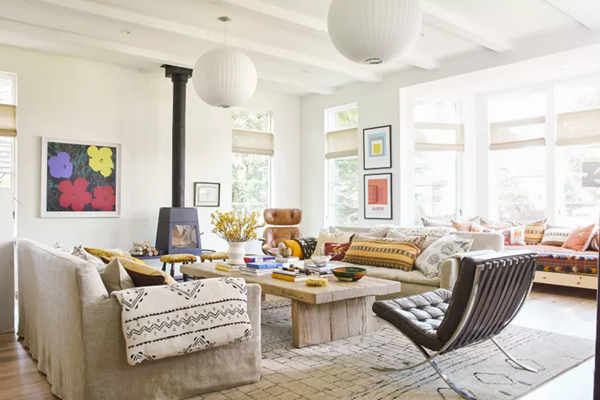
Steal These 16 Expert-Approved Decorating Secrets

How To Accessorize Your Living Room
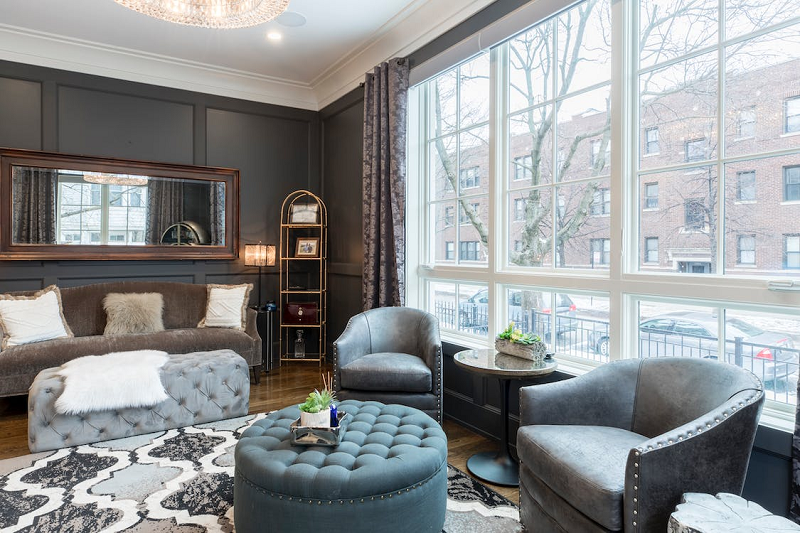
Small Space? 10 Ways To Make A Room Appear Bigger
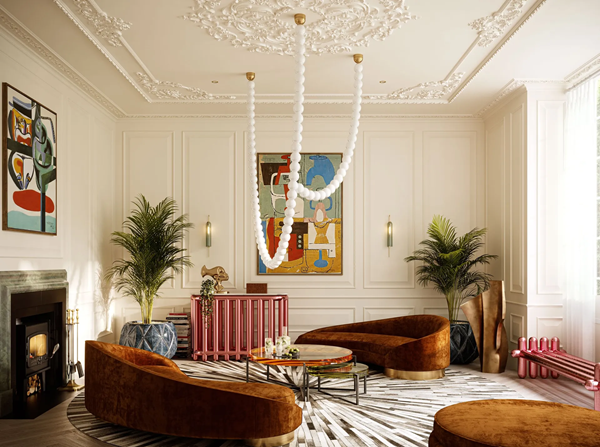
Make Your space Look Expensive
GET CAUGHT UP ON ALL THE INSPIRING DECOR TIPS:
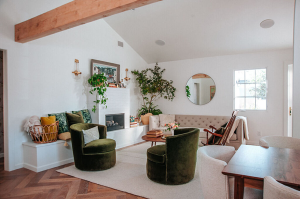
18 Fresh Decorating Ideas To Update Your Fireplace

How To Create An Art Gallery Wall


